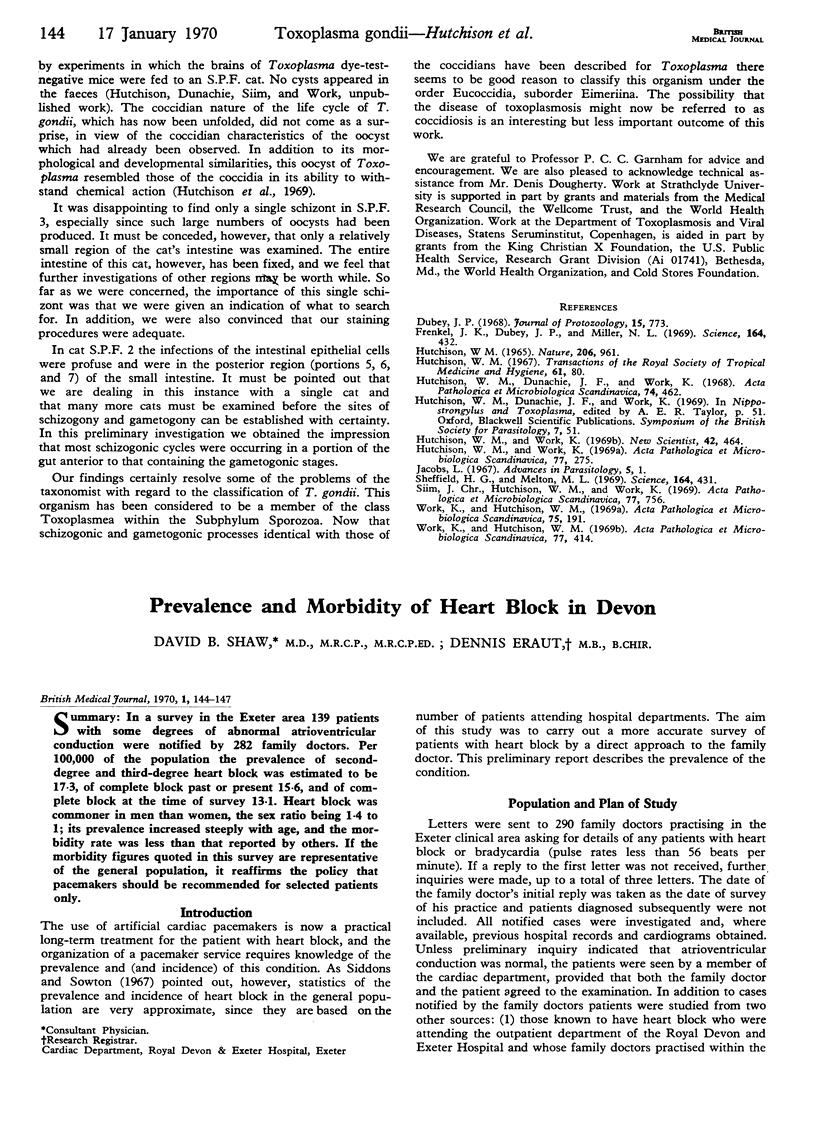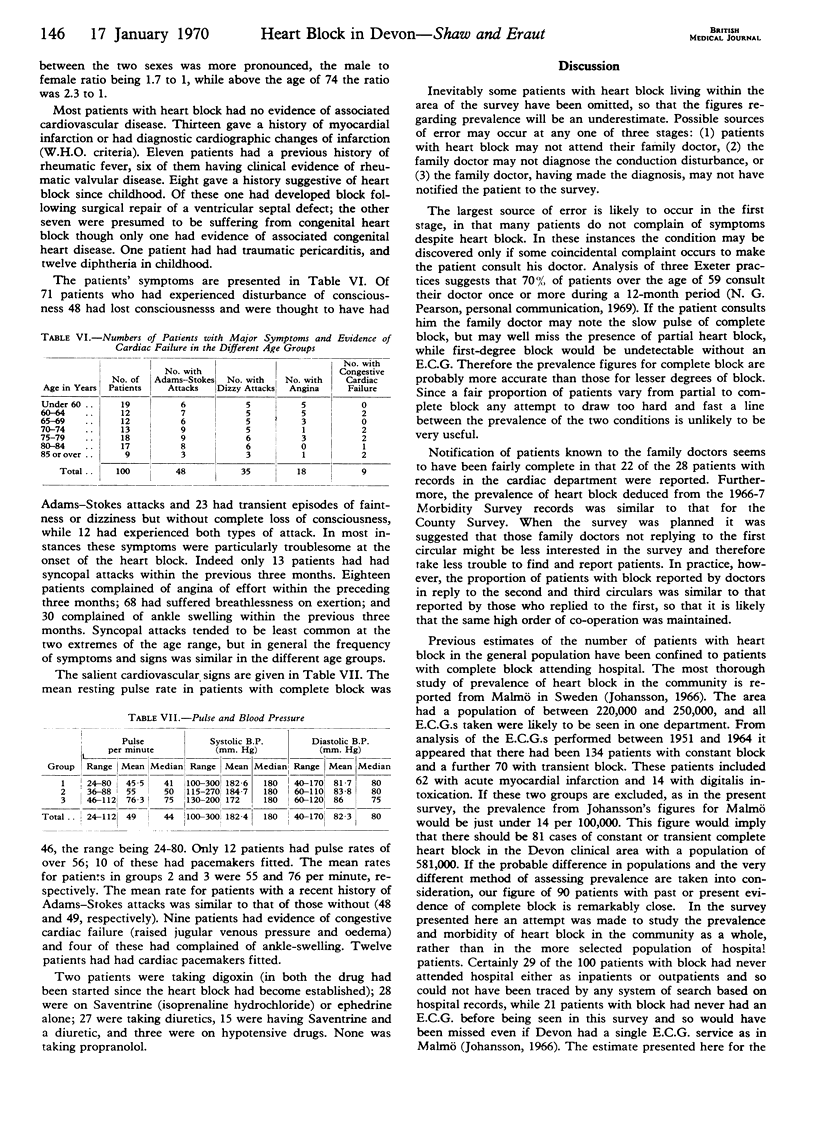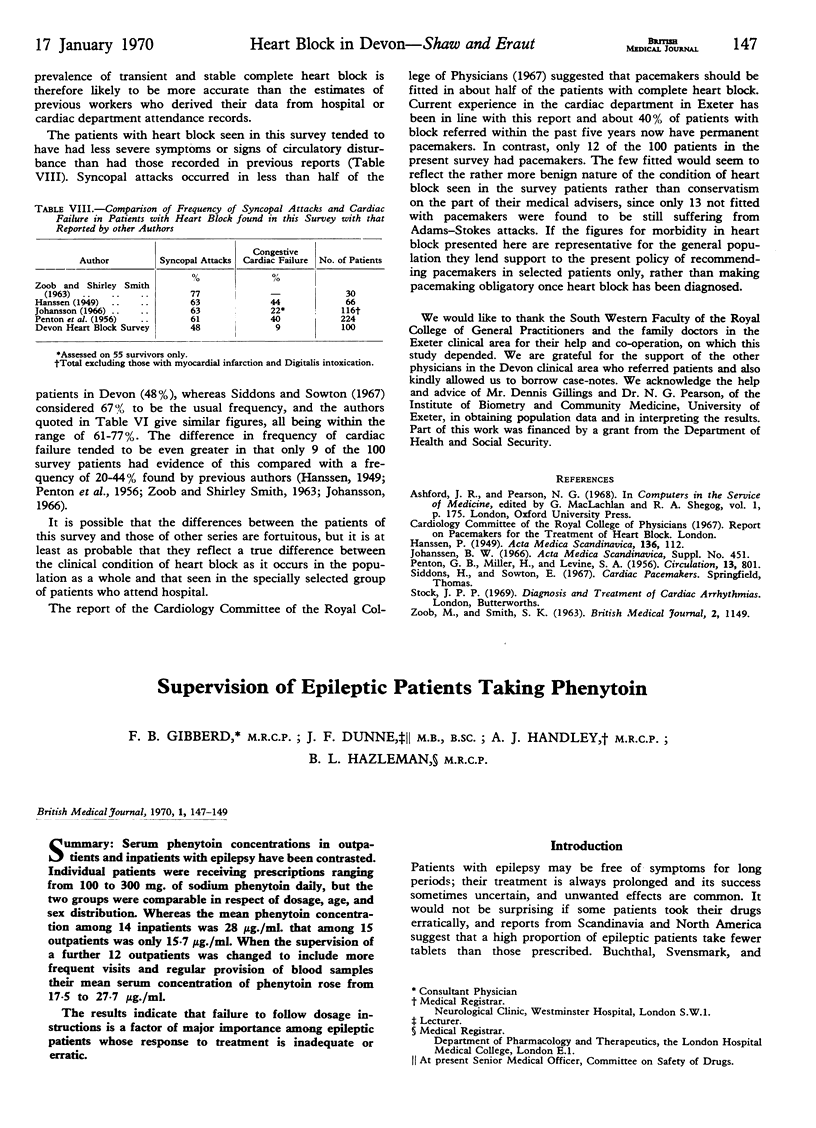Abstract
In a survey in the Exeter area 139 patients with some degrees of abnormal atrioventricular conduction were notified by 282 family doctors. Per 100,000 of the population the prevalence of second-degree and thrid-degree heart block was estimated to be 17·3, of complete block past or present 15·6, and of complete block at the time of survey 13·1. Heart block was commoner in men than women, the sex ratio being 1·4 to 1; its prevalence increased steeply with age, and the morbidity rate was less than that reported by others. If the morbidity figures quoted in this survey are representative of the general population, it reaffirms the policy that pacemakers should be recommended for selected patients only.
Full text
PDF



Selected References
These references are in PubMed. This may not be the complete list of references from this article.
- HANSSEN P. The incidence of auricular flutter and auricular fibrillation associated with complete auriculoventricular dissociation. Acta Med Scand. 1949 Dec 23;136(2):112–121. [PubMed] [Google Scholar]
- LEVINE S. A., MILLER H., PENTON G. B. Some clinical features of complete heart block. Circulation. 1956 Jun;13(6):801–824. doi: 10.1161/01.cir.13.6.801. [DOI] [PubMed] [Google Scholar]
- ZOOB M., SMITH K. S. THE AETIOLOGY OF COMPLETE HEART-BLOCK. Br Med J. 1963 Nov 9;2(5366):1149–1153. doi: 10.1136/bmj.2.5366.1149. [DOI] [PMC free article] [PubMed] [Google Scholar]


